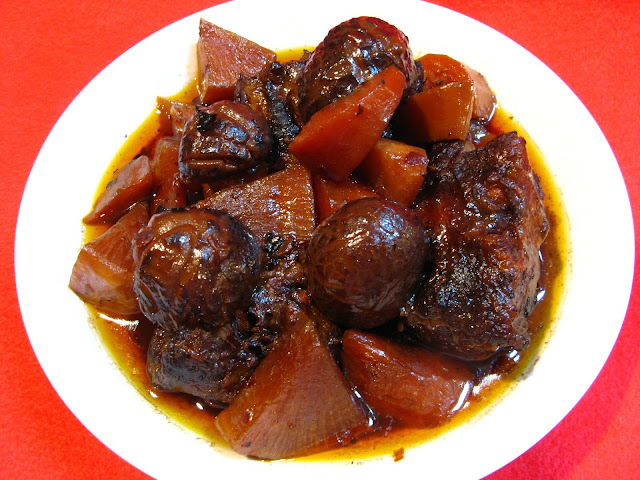Happy New Year to everyone! For my first recipe of the year,
here’s a quick cooking (and it’s really easy to make) steamed egg custard dish
using scallops. The classic Chinese-American dish uses ground pork instead of
scallops. I can’t take credit for substituting scallops for pork, since I got
the idea from a restaurant menu. I also found out that one pound of frozen scallops yields one-half pound thawed, so be sure to use enough thawed scallops in this dish. I’ve also had a version of this dish using clams
in their shells, so there must be more variations that I haven’t run into yet.
The taste of this dish is greatly influenced by the quality
of the stock used to scramble the eggs. The dish will taste different if canned
or homemade stock is used, so I try to use homemade stock from the Bone Soup
(湯, Tong1) recipe whenever
possible. Since scallops are such a luxurious ingredient, using homemade stock
is a must in my mind. The scrambled egg mixture needs to cover the scallops.
The amount you’ll need depends upon the size of the scallops used and the size
of the steaming plate. The classic recipe uses 2 eggs and ½ cup (250 ml.) of
stock, but in this case I needed more egg mixture to cover the scallops, so I
increased the recipe to 3 eggs and ¾ cup (375 ml.) of stock. All the air
bubbles need to be removed from the egg mixture after pouring onto the scallops
or the surface won’t be smooth once it’s steamed. I’ve seen some recipes where
the egg mixture is strained or the bowl is covered with aluminum foil before
steaming to prevent any water from settling on the egg custard surface (which
mars the cooked surface). I don’t bother to strain or cover the egg custard
while steaming, but they are options you can consider.
Enjoy!






